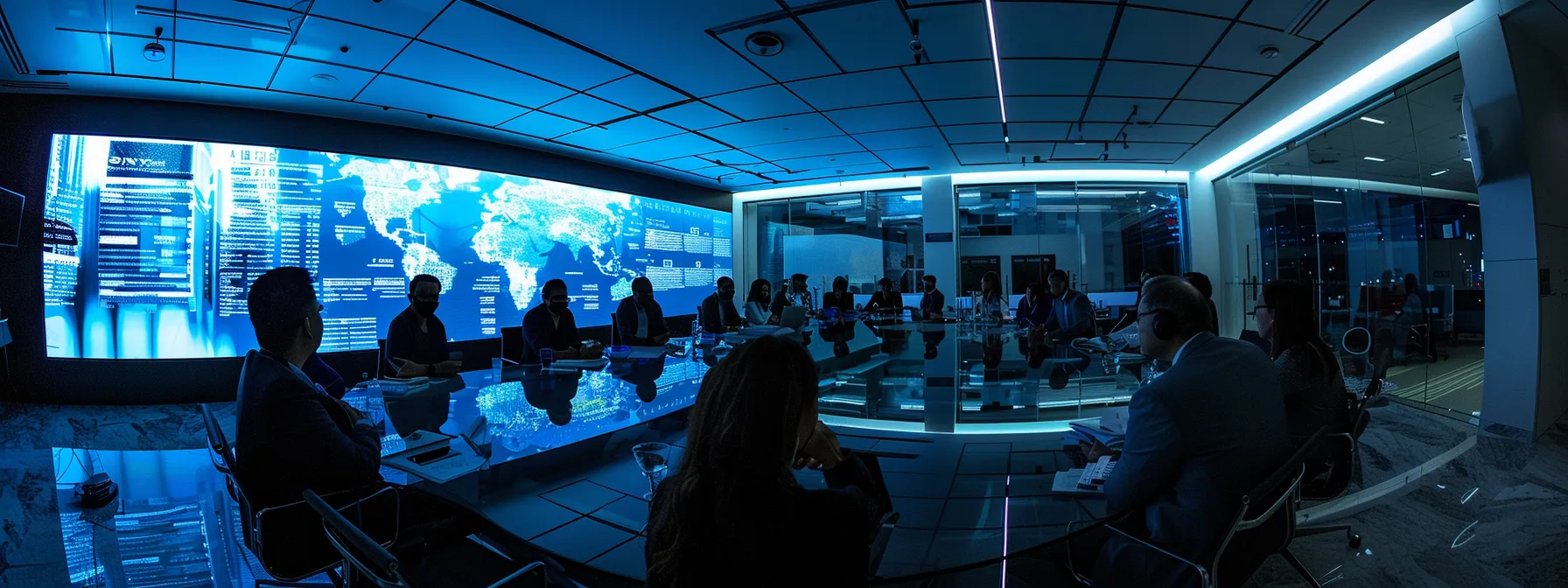CMMC certification is essential for small businesses looking to secure government contracts and protect sensitive data. Many small business owners struggle to understand the specific CMMC level requirements and how to achieve compliance. This guide will clarify the CMMC levels, outline steps for compliance, and address common challenges faced by small businesses. By engaging with this content, readers will gain practical insights to navigate CMMC consulting effectively, ensuring their business is better protected against threats like ransomware and equipped with the right antivirus software.
Key Takeaways
- CMMC certification enhances cybersecurity and compliance for small businesses in the defense supply chain
- Understanding CMMC levels is crucial for implementing effective security measures and risk management
- Partnering with managed service providers can alleviate compliance challenges for small businesses
- Regular employee training on cybersecurity best practices is essential for maintaining compliance
- Achieving CMMC certification builds trust with clients and improves opportunities for government contracts
Introduction to CMMC for Small Businesses

The Cybersecurity Maturity Model Certification (CMMC) is essential for small businesses, particularly those in the supply chain, as it establishes a framework for managing cybersecurity risks. Understanding the key differences between CMMC levels helps businesses implement effective configuration management and managed security services. This guide will explore the importance of cmmc consulting, including how to protect against threats like phishing and ensure robust infrastructure security.
Understanding the Cybersecurity Maturity Model Certification
The Cybersecurity Maturity Model Certification (CMMC) is a vital framework designed to enhance the cybersecurity posture of organizations, particularly those in the defense supply chain. By establishing clear CMMC requirements, it helps organizations assess their current security practices and implement necessary improvements to protect against cyberattacks. This structured approach ensures that users within the organization understand their roles in maintaining security and compliance.
Each level of CMMC builds upon the previous one, requiring organizations to meet specific criteria to achieve certification. For instance, a small business may start at Level 1, focusing on basic security practices, and gradually work towards higher levels that demand more advanced security measures. This progression not only strengthens the organization‘s system against potential threats but also demonstrates a commitment to safeguarding sensitive information.
Understanding CMMC is crucial for small businesses aiming to secure contracts with the Department of Defense and other federal agencies. By adhering to CMMC requirements, organizations can significantly reduce their vulnerability to cyberattacks, ensuring that their systems are resilient and compliant. This proactive approach not only protects the organization but also builds trust with clients and partners, fostering a secure business environment:
- Overview of CMMC and its importance for small businesses.
- Explanation of CMMC levels and their requirements.
- Benefits of achieving CMMC certification for organizations.
The Importance of CMMC for Small Businesses
The Cybersecurity Maturity Model Certification (CMMC) is crucial for small businesses seeking to manage risk effectively, especially those handling federal contract information. By adhering to CMMC requirements, these businesses can implement robust risk management strategies that protect sensitive data and enhance their overall cybersecurity posture. This proactive approach not only safeguards their operations but also positions them favorably when bidding for government contracts.
Small businesses often face unique challenges in cybersecurity, making CMMC compliance essential. The framework aligns with guidelines set forth by the National Institute of Standards and Technology (NIST), providing a structured path for organizations to follow. By understanding and implementing these standards, small businesses can demonstrate their commitment to security, which is increasingly important for securing contracts with federal agencies.
Furthermore, the Small Business Administration recognizes the significance of CMMC in fostering a secure environment for small enterprises. Achieving CMMC certification not only mitigates risks associated with cyber threats but also enhances credibility with clients and partners. This certification can be a decisive factor in winning contracts, as it reflects a business’s dedication to maintaining high security standards and compliance with federal regulations.
Key Differences Between CMMC Levels
The Cybersecurity Maturity Model Certification (CMMC) consists of five distinct levels, each with specific requirements that build upon the previous one. For small businesses, understanding these levels is crucial, especially when dealing with controlled unclassified information (CUI) that may be required for contracts with the Department of Defense. Each level introduces more stringent access control measures, ensuring that sensitive data is adequately protected against vulnerabilities.
Overview of CMMC Level Requirements

The CMMC framework outlines specific level requirements essential for small businesses within the defense industrial base. Level 1 focuses on basic cyber hygiene practices, ensuring foundational cybersecurity measures are in place. Level 2 introduces advanced practices that enhance security protocols, while Level 3 emphasizes expert-level security, incorporating NIST guidelines and managed services. Understanding these levels is vital for effective risk management and compliance.
Level 1 Requirements: Basic Cyber Hygiene
Level 1 of the Cybersecurity Maturity Model Certification (CMMC) emphasizes basic cyber hygiene practices that are essential for small businesses, particularly those acting as subcontractors in the defense supply chain. This level requires organizations to implement fundamental security measures, such as access control and regular password updates, to mitigate risks associated with unauthorized access to critical infrastructure. By establishing these basic protocols, businesses can create a solid foundation for their cybersecurity efforts.
At this stage, small businesses must also focus on the importance of data encryption to protect sensitive information. Implementing encryption helps safeguard data both in transit and at rest, reducing the risk of data breaches. This practice not only enhances the security posture of the organization but also demonstrates a commitment to protecting sensitive information, which is crucial for maintaining trust with clients and partners.
Understanding and adhering to Level 1 requirements is vital for small businesses aiming to achieve CMMC certification. By prioritizing basic cyber hygiene, organizations can effectively manage risks and lay the groundwork for more advanced security measures in subsequent levels. This proactive approach not only prepares businesses for future compliance but also positions them favorably when competing for contracts that require adherence to the Cybersecurity Maturity Model Certification.
Level 2 Requirements: Advanced Practices
Level 2 of the Cybersecurity Maturity Model Certification (CMMC) introduces advanced practices that build upon the foundational requirements of Level 1. At this stage, small businesses must implement more sophisticated security measures, such as risk assessments and incident response plans, to effectively combat threats like malware. These practices not only enhance the organization’s cybersecurity posture but also prepare them for the rigorous audits associated with higher CMMC levels.
Authentication becomes a critical focus at Level 2, as businesses are required to establish stronger access controls to protect sensitive information. This includes implementing multi-factor authentication (MFA) to ensure that only authorized personnel can access critical systems. By prioritizing these advanced practices, organizations can significantly reduce their vulnerability to cyber threats and demonstrate their commitment to achieving CMMC certification.
Understanding and adhering to Level 2 requirements is essential for small businesses aiming to progress through the CMMC levels. By adopting these advanced practices, organizations not only enhance their security measures but also position themselves favorably for future compliance and contract opportunities. This proactive approach to cybersecurity fosters trust with clients and partners, ultimately contributing to a more secure business environment:
- Implementing risk assessments to identify vulnerabilities.
- Establishing incident response plans for effective threat management.
- Utilizing multi-factor authentication to enhance access control.
- Preparing for audits to ensure compliance with CMMC standards.
Level 3 Requirements: Expert-Level Security
Level 3 of the Cybersecurity Maturity Model Certification (CMMC) requires small businesses to implement expert-level security measures that go beyond basic practices. Organizations must establish comprehensive policies and procedures to protect their information systems, ensuring compliance with federal regulations. This level emphasizes the importance of continuous monitoring and risk management to safeguard sensitive data effectively.
At this stage, small businesses are expected to develop and maintain a robust incident response plan that outlines how to address potential cybersecurity threats. This proactive approach not only helps mitigate risks but also demonstrates a commitment to maintaining high security standards. By adhering to these requirements, organizations can enhance their credibility with the Department of Defense and other federal agencies, positioning themselves favorably for contract opportunities.
Additionally, Level 3 mandates the implementation of advanced access control measures, including multi-factor authentication and encryption protocols. These practices are essential for protecting controlled unclassified information (CUI) and ensuring that only authorized personnel can access critical systems. By focusing on these expert-level security requirements, small businesses can significantly improve their cybersecurity posture and achieve compliance with the CMMC framework.
Identifying the Right CMMC Level for Your Business

Identifying the appropriate CMMC maturity level for a small business involves evaluating contracts and data handling practices, determining the organization‘s risk profile, and aligning business goals with CMMC compliance. Understanding these factors is essential for achieving cybersecurity compliance and meeting federal acquisition regulations. This section will provide practical insights into each topic, guiding small businesses through the CMMC compliance process.
Evaluating Your Contracts and Data Handling
Evaluating contracts is a critical step for small businesses in determining the appropriate CMMC level. Organizations must assess whether they handle classified information or controlled unclassified information (CUI) as part of their contracts with the Department of Defense or other federal agencies. Understanding the nature of these contracts helps businesses identify the specific information security requirements they need to meet for compliance.
In addition to reviewing contracts, small businesses should analyze their data handling practices. This includes examining how sensitive information is stored, processed, and transmitted within the organization. By implementing robust data management protocols, businesses can ensure that they are prepared to meet the necessary CMMC level requirements, thereby enhancing their overall cybersecurity posture.
Finally, aligning business goals with CMMC compliance is essential for long-term success. Small businesses should consider how achieving a specific CMMC level can improve their competitive edge in securing government contracts. By prioritizing information security and understanding the implications of their data handling practices, organizations can effectively position themselves for compliance and growth in the defense supply chain.
Determining Your Risk Profile
Determining a small business’s risk profile is a critical step in achieving compliance with the Cybersecurity Maturity Model Certification (CMMC). This process involves assessing the types of data the organization handles, particularly whether it includes controlled unclassified information (CUI) or classified information. By understanding the sensitivity of the data, businesses can identify the specific security measures required to protect it effectively.
Small businesses should also evaluate their existing cybersecurity practices and potential vulnerabilities. This includes reviewing current security protocols, employee training, and incident response capabilities. By identifying gaps in their security posture, organizations can prioritize improvements that align with the necessary CMMC level, ensuring they are adequately prepared for compliance and risk management.
Finally, aligning the risk profile with business objectives is essential for long-term success. Small businesses should consider how achieving a specific CMMC level can enhance their competitive advantage in securing government contracts. By focusing on risk management and compliance, organizations can not only protect sensitive information but also position themselves favorably in the defense supply chain:
| Risk Assessment Factors | Considerations |
|---|---|
| Data Sensitivity | Identify if handling CUI or classified information. |
| Current Security Practices | Evaluate existing protocols and employee training. |
| Compliance Alignment | Align risk management with business objectives for contract opportunities. |
Aligning Business Goals With CMMC Compliance
Aligning business goals with CMMC compliance is essential for small businesses aiming to secure government contracts. By understanding the specific requirements of each CMMC level, organizations can tailor their cybersecurity strategies to meet both compliance standards and their operational objectives. This alignment not only enhances security but also positions the business as a reliable partner in the defense supply chain.
Small businesses should evaluate how achieving a particular CMMC level can improve their competitive edge. For instance, a company that successfully meets Level 2 requirements may find it easier to bid on contracts that require advanced security measures. This proactive approach to compliance can lead to increased opportunities and foster trust with clients and partners.
Furthermore, integrating CMMC compliance into the overall business strategy can streamline operations and reduce risks. By prioritizing cybersecurity as a core business function, organizations can ensure that they are not only compliant but also resilient against potential threats. This strategic alignment ultimately supports long-term growth and sustainability in a competitive market:
- Evaluate CMMC level requirements against business objectives.
- Identify opportunities for competitive advantage through compliance.
- Integrate cybersecurity into the overall business strategy for resilience.
Steps to Achieve Compliance With CMMC Levels

Achieving compliance with CMMC levels involves several critical steps. First, performing a gap analysis helps identify existing security weaknesses. Next, implementing necessary security controls ensures that the organization meets the required standards. Finally, preparing for the certification assessment is essential to demonstrate compliance effectively. Each of these steps plays a vital role in enhancing a small business’s cybersecurity posture and readiness for CMMC certification.
Performing a Gap Analysis
Performing a gap analysis is a critical first step for small businesses aiming to achieve compliance with the Cybersecurity Maturity Model Certification (CMMC). This process involves assessing current cybersecurity practices against the specific requirements of the desired CMMC level. By identifying discrepancies between existing measures and the necessary standards, organizations can prioritize areas that need improvement to enhance their overall security posture.
During the gap analysis, small businesses should evaluate their policies, procedures, and technical controls. This includes reviewing access controls, incident response plans, and employee training programs. By systematically analyzing these components, organizations can pinpoint vulnerabilities and develop a targeted action plan to address them, ensuring they are well-prepared for the certification process.
Ultimately, a thorough gap analysis not only helps small businesses understand their current cybersecurity landscape but also sets the foundation for achieving CMMC compliance. By taking this proactive approach, organizations can effectively mitigate risks associated with cyber threats and position themselves favorably for government contracts. The following table summarizes the key steps involved in performing a gap analysis:
| Step | Description |
|---|---|
| 1. Assess Current Practices | Review existing cybersecurity policies and procedures. |
| 2. Identify Gaps | Determine discrepancies between current practices and CMMC requirements. |
| 3. Develop Action Plan | Create a plan to address identified vulnerabilities and enhance security measures. |
Implementing Necessary Security Controls
Implementing necessary security controls is a critical step for small businesses aiming to achieve compliance with the Cybersecurity Maturity Model Certification (CMMC). Organizations must assess their current security measures and identify gaps that need to be addressed. This process often involves adopting advanced technologies, such as firewalls and intrusion detection systems, to protect sensitive data from cyber threats.
Small businesses should also focus on establishing clear policies and procedures that govern access to sensitive information. This includes implementing role-based access controls to ensure that only authorized personnel can access critical systems. By doing so, organizations can significantly reduce the risk of unauthorized access and enhance their overall cybersecurity posture.
Regular training and awareness programs for employees are essential in reinforcing the importance of security controls. By educating staff on best practices and potential threats, businesses can foster a culture of security that supports compliance with CMMC requirements. This proactive approach not only strengthens the organization’s defenses but also positions them favorably for future contract opportunities within the defense supply chain.
Preparing for the Certification Assessment
Preparing for the certification assessment is a critical step for small businesses seeking compliance with the Cybersecurity Maturity Model Certification (CMMC). Organizations should conduct a thorough review of their cybersecurity practices to ensure they align with the specific requirements of the desired CMMC level. This preparation involves gathering documentation, such as policies and procedures, that demonstrate adherence to security controls and practices.
Small businesses must also engage in mock assessments to simulate the certification process. This practice helps identify potential weaknesses and areas for improvement before the official evaluation. By addressing these gaps in advance, organizations can enhance their confidence and readiness, ultimately increasing the likelihood of a successful certification outcome.
Additionally, it is essential for small businesses to communicate effectively with their staff about the certification process. Ensuring that employees understand their roles and responsibilities in maintaining compliance can significantly impact the overall success of the assessment. By fostering a culture of security awareness, organizations can better prepare for the certification assessment and demonstrate their commitment to achieving CMMC compliance.
Challenges Small Businesses May Face

Small businesses often encounter significant challenges when striving for CMMC compliance. Limited resources and budget constraints can hinder their ability to implement necessary security measures. Additionally, navigating complex security requirements may overwhelm organizations unfamiliar with the CMMC framework. Ensuring ongoing compliance and monitoring further complicates the process, making it essential for businesses to understand these hurdles to effectively manage their cybersecurity posture.
Limited Resources and Budget Constraints
Small businesses often face significant challenges in achieving CMMC compliance due to limited resources and budget constraints. Many organizations struggle to allocate sufficient funds for cybersecurity measures, which can hinder their ability to implement the necessary controls required for higher CMMC levels. This financial limitation can lead to inadequate security practices, increasing vulnerability to cyber threats.
Additionally, small businesses may lack the technical expertise needed to navigate the complexities of the CMMC framework. Without dedicated IT staff or access to managed IT services, these organizations may find it difficult to understand and meet the specific requirements of each CMMC level. This knowledge gap can result in missed opportunities for compliance and potential government contracts.
To address these challenges, small businesses should consider leveraging managed service providers (MSPs) that specialize in cybersecurity and compliance solutions. By partnering with an MSP, organizations can access expert guidance and resources without the burden of hiring full-time staff. This approach not only helps in achieving CMMC compliance but also enhances overall cybersecurity posture, allowing businesses to focus on their core operations:
- Limited financial resources hinder cybersecurity investments.
- Lack of technical expertise complicates compliance efforts.
- Partnering with managed service providers can alleviate these challenges.
Navigating Complex Security Requirements
Navigating complex security requirements can be a daunting task for small businesses striving for CMMC compliance. The intricacies of the Cybersecurity Maturity Model Certification (CMMC) framework often overwhelm organizations that lack dedicated IT resources. Understanding the specific requirements for each level is essential, as failing to meet these standards can hinder a business’s ability to secure government contracts.
Small businesses may struggle to interpret the technical language and detailed guidelines outlined in the CMMC framework. This challenge can lead to confusion regarding which security measures are necessary for their specific operations. Engaging with managed service providers (MSPs) can offer valuable support, as these experts can simplify the compliance process and provide tailored solutions that align with the unique needs of the business.
Moreover, the dynamic nature of cybersecurity threats necessitates ongoing adjustments to security protocols. Small businesses must remain vigilant and proactive in updating their practices to stay compliant with CMMC requirements. By fostering a culture of continuous improvement and leveraging external expertise, organizations can effectively navigate the complexities of CMMC compliance and enhance their overall cybersecurity posture.
Ensuring Ongoing Compliance and Monitoring
Ensuring ongoing compliance with the Cybersecurity Maturity Model Certification (CMMC) is a continuous challenge for small businesses. Organizations must regularly assess their cybersecurity practices to adapt to evolving threats and maintain compliance with the required standards. This ongoing vigilance is essential for protecting sensitive data and ensuring that the business remains eligible for government contracts.
Small businesses often struggle with the resources needed for effective monitoring and compliance. Without dedicated IT staff or sufficient budget, maintaining the necessary security measures can become overwhelming. Engaging with managed service providers (MSPs) can alleviate this burden, as they offer expertise and support to help businesses stay compliant while focusing on their core operations.
Regular training and awareness programs for employees are also critical in ensuring ongoing compliance. By educating staff about the importance of cybersecurity and their role in maintaining compliance, organizations can foster a culture of security. This proactive approach not only enhances the overall security posture but also positions the business favorably in the competitive landscape of government contracting.
Tips for Simplifying CMMC Compliance

Small businesses can simplify CMMC compliance by leveraging affordable security solutions, training employees on cybersecurity best practices, and seeking assistance from certified professionals. These strategies not only enhance security measures but also ensure that organizations are well-prepared for the certification process. Each of these approaches provides practical insights that can significantly ease the compliance journey.
Leveraging Affordable Security Solutions
Small businesses can effectively leverage affordable security solutions to meet CMMC compliance requirements without straining their budgets. Utilizing cloud-based security services allows organizations to access advanced cybersecurity tools and resources that would otherwise be cost-prohibitive. These solutions often include features such as data encryption, threat detection, and incident response capabilities, which are essential for protecting sensitive information.
Another practical approach involves adopting open-source security software, which can provide robust protection at little to no cost. Many open-source tools offer functionalities that align with CMMC requirements, such as firewalls and intrusion detection systems. By integrating these tools into their cybersecurity strategy, small businesses can enhance their security posture while managing expenses effectively.
Additionally, partnering with managed service providers (MSPs) can offer small businesses access to expert guidance and tailored security solutions. MSPs often provide scalable services that can adapt to the specific needs of an organization, ensuring compliance with CMMC levels. This collaboration not only simplifies the compliance process but also allows businesses to focus on their core operations while maintaining a strong cybersecurity framework.
Training Employees on Cybersecurity Best Practices
Training employees on cybersecurity best practices is a fundamental step for small businesses aiming to achieve CMMC compliance. By providing regular training sessions, organizations can ensure that their staff understands the importance of cybersecurity and the specific measures they need to follow. This knowledge empowers employees to recognize potential threats, such as phishing attempts, and respond appropriately, thereby reducing the risk of security breaches.
Incorporating real-world scenarios into training can enhance the learning experience and make the information more relatable. For instance, small businesses can simulate phishing attacks to help employees identify suspicious emails and understand the consequences of falling victim to such threats. This hands-on approach not only reinforces the training but also fosters a culture of vigilance and accountability within the organization.
Furthermore, ongoing training and awareness programs are essential for maintaining compliance with CMMC requirements. As cybersecurity threats evolve, it is crucial for employees to stay informed about the latest security practices and technologies. By prioritizing continuous education, small businesses can strengthen their overall cybersecurity posture and ensure that their workforce is equipped to protect sensitive information effectively.
Seeking Assistance From Certified Professionals
Seeking assistance from certified professionals can significantly ease the process of achieving CMMC compliance for small businesses. These experts possess in-depth knowledge of the Cybersecurity Maturity Model Certification framework and can provide tailored guidance to help organizations navigate the complexities of each CMMC level. By leveraging their expertise, businesses can identify gaps in their current cybersecurity practices and implement effective solutions that align with compliance requirements.
Certified professionals can also assist small businesses in developing comprehensive security policies and procedures that meet CMMC standards. Their experience in the field allows them to offer practical insights and best practices that organizations may not have considered. This support not only streamlines the compliance process but also enhances the overall cybersecurity posture, ensuring that sensitive information is adequately protected against potential threats.
Moreover, engaging with certified professionals can provide small businesses with ongoing support and training, which is essential for maintaining compliance over time. These experts can conduct regular assessments and updates to security measures, helping organizations stay ahead of evolving cyber threats. By fostering a partnership with certified professionals, small businesses can build a resilient cybersecurity framework that not only meets CMMC requirements but also positions them favorably for future government contracts.
Conclusion
Understanding CMMC level requirements is crucial for small businesses aiming to secure government contracts and protect sensitive information. By progressively implementing the necessary cybersecurity measures outlined in each level, organizations can enhance their security posture and demonstrate compliance with federal regulations. This proactive approach not only mitigates risks associated with cyber threats but also fosters trust with clients and partners. Ultimately, achieving CMMC certification positions small businesses for success in the competitive defense supply chain.




